Cyber Security as a Service: 5 Key Capabilities and Choosing a Provider
What Is Cyber Security as a Service (CSaaS)?
Cyber Security as a Service (CSaaS) is an outsourcing model for security management. Instead of maintaining an in-house cyber security team and infrastructure, organizations subscribe to security services provided by external vendors.
This model includes a range of services such as real-time threat monitoring, data protection, and incident response, managed remotely by cyber security professionals. CSaaS allows organizations to access security expertise and advanced technology without the need for significant capital investment in security infrastructure.
Need an incident response provider?
Cynet is a trusted partner that analyzes network and endpoint data, raises alerts, and protects against a wide range of known and zero day threats. Cynet provides its leading endpoint security and threat detection platform, operated by CyOps, an outsourced cybersecurity team on call 24/7 to respond to critical incidents quickly and effectively. Cynet can deploy its powerful endpoint detection and response (EDR) system across thousands of endpoints in up to two hours to effectively mitigate threats across an enterprise.
Request a rapid response from Cyber security services
Why Is CSaaS Important?
CSaaS provides organizations with scalable, flexible cyber security solutions that can adapt to changing threat landscapes. As cyber threats become more sophisticated and pervasive, maintaining adequate security measures internally can be challenging and costly. It also requires specialized expertise that can be difficult to access.
CSaaS offers a cost-effective way to ensure continuous protection against threats, compliance with regulatory requirements, and the ability to respond quickly to security incidents. It shifts the responsibility of cyber security management to specialized vendors, allowing in-house teams to focus on the organization’s core operations.
How Does Cyber Security as a Service Differ from Traditional Cyber Security?
CSaaS differs from traditional cyber security in several key areas.
Cost Structure
CSaaS operates on a subscription-based model, where organizations pay a recurring fee for the services they need. This reduces the need for significant upfront investment in security infrastructure and personnel.
Traditional cyber security requires substantial capital investment in hardware, software, and in-house security teams. Ongoing costs include maintenance, updates, and training.
Scalability
CSaaS is highly scalable, allowing organizations to adjust their security services based on changing needs and threat landscapes. Providers can quickly increase or decrease resources as required.
Traditional cyber security is less flexible. Scaling up can be slow and costly, requiring the purchase of new equipment and hiring additional staff. Scaling down is also challenging due to fixed investments in infrastructure.
Access to Expertise
CSaaS provides access to a range of specialized security professionals with expertise in various domains, such as threat intelligence, incident response, and compliance.
Traditional cyber security Organizations must recruit, train, and retain their own experts, which can be challenging and costly, especially for smaller companies.
Technology and Tools
CSaaS uses advanced, often proprietary, tools and technologies, including AI and machine learning for enhanced threat detection and response. Providers continuously update their technology to stay ahead of emerging threats.
Traditional cyber security relies on the organization’s ability to invest in and maintain up-to-date technology. This can lead to slower adoption of new tools and techniques.
Maintenance and Management
With CSaaS, the service provider is responsible for the ongoing management, updates, and maintenance of the security infrastructure. This includes patch management, system upgrades, and compliance with the latest security standards.
In traditional cyber security, the organization’s IT team handles all aspects of maintenance and management, which can be resource-intensive and distract from core business activities.
Response Time
CSaaS offers 24/7 monitoring and rapid response capabilities, ensuring that threats are detected and mitigated in real time. The provider’s team is always on standby to address incidents.
Traditional cyber security is less reliable. Response times depend on the availability and alertness of the in-house team. Smaller teams may struggle to provide round-the-clock coverage, leading to potential delays in incident response.
Related content: Read our guide to cyber security compliance (coming soon)
Tips From Expert
In my experience, here are tips that can help you better leverage Cyber Security as a Service (CSaaS):
- Evaluate the provider’s incident response readiness
Beyond standard services, assess how well the provider can handle large-scale incidents. Verify their experience with major breaches and how quickly they can deploy incident response teams. - Integrate CSaaS with existing SIEM tools
Ensure that the CSaaS platform integrates seamlessly with your Security Information and Event Management (SIEM) system. This allows for consolidated monitoring and more accurate threat correlation. - Regularly review threat intelligence feeds used by the provider
CSaaS providers often rely on multiple threat intelligence feeds. Regularly review these sources to ensure they cover the latest global threats and are relevant to your industry. - Proactively manage service-level agreement (SLA) expectations
Regularly review and adjust SLAs as your business and threat landscape evolve. Ensure that the SLAs include strict timelines for threat detection, response, and remediation. - Establish a co-managed security model
Consider a hybrid approach where your internal team works alongside the CSaaS provider. This allows you to retain some control while benefiting from the provider’s advanced capabilities and expertise.
5 Key Capabilities of Cyber Security as a Service
CSaaS solutions typically offer one or more of the following capabilities.
1. Security Monitoring
Security monitoring in CSaaS involves continuous supervision of an organization’s digital environment to detect and respond to threats. AI-powered systems and skilled cyber security professionals monitor network traffic, endpoint behaviors, and access logs to identify suspicious activities. Automated tools combined with human expertise enable immediate protection, reducing damage from breaches.
Investing in security monitoring services means an organization can rely on 24/7 vigilance. This ensures that any unusual activity is caught early and addressed promptly, minimizing recovery time as well as financial and reputational impact.
2. Threat Detection and Response
Threat detection and response in CSaaS involves identifying potential security threats in real-time and implementing measures to neutralize them. This service typically uses advanced tools like intrusion detection systems (IDS), security information and event management (SIEM) systems, and threat intelligence platforms.
These tools collect and analyze data from various sources, such as network traffic, user behavior, and system logs, to detect anomalies that may indicate malicious activities. Once a threat is detected, response mechanisms are activated. These can include automated actions, such as isolating affected systems or blocking malicious IP addresses, and manual interventions by cyber security experts who investigate and remediate the issue.
3. Endpoint Protection
Endpoint protection focuses on securing devices that connect to the organization’s network, such as laptops, desktops, and mobile devices. This service includes deploying antivirus software, endpoint detection and response (EDR) tools, and implementing policies for device management. The goal is to prevent malware infections, unauthorized access, and data breaches originating from compromised endpoints.
CSaaS providers manage and update these tools to ensure they are always equipped to handle the latest threats. This helps organizations protect sensitive data, maintain compliance with security standards, and ensure that endpoints do not become gaps in their security posture.
4. Cloud Security
Cloud security involves protecting data, applications, and workloads hosted in cloud environments. This includes a variety of measures such as encryption, identity and access management (IAM), and continuous monitoring of cloud resources. Given the increasing reliance on cloud services, ensuring security in this domain is critical.
CSaaS providers offer expertise in securing cloud infrastructures, whether public, private, or hybrid. They ensure that data stored in the cloud is protected from breaches and that applications running in the cloud are secure from vulnerabilities. They also help organizations comply with regulations and standards specific to cloud security.
5. Incident Response and Forensics
Incident response and forensics involve handling security breaches and conducting thorough investigations to understand the scope and impact of incidents. When a security incident occurs, the CSaaS team implements a pre-defined response plan to contain and mitigate the threat. This may include isolating affected systems, eradicating malicious code, and restoring normal operations.
Forensics involves analyzing the incident to determine how it occurred, what data was affected, and how similar incidents can be prevented in the future. This analysis provides insights into the organization’s security posture and helps improve defenses against future attacks. The expertise of CSaaS providers in incident response and forensics helps organizations ensure a swift recovery from security incidents.
How to Choose a Cyber Security as a Service Provider
When evaluating CSaaS providers, consider the following factors.
Cost
Organizations should conduct a thorough cost analysis to understand the financial implications of engaging a CSaaS provider. This includes assessing both upfront costs, such as initial setup fees, and ongoing expenses, such as subscription fees and costs for additional services.
It is important to compare these costs against the potential savings from reduced in-house security expenses, such as salaries for security personnel, investments in hardware and software, and the costs associated with managing and maintaining security infrastructure. Consider the potential cost savings from avoiding security breaches.
Features and Capabilities
Identify the organization’s specific security requirements, which may include threat detection, real-time monitoring, incident response, endpoint protection, cloud security, and regulatory compliance. A good CSaaS provider should offer a comprehensive suite of services that cover all these areas.
Additionally, assess their use of advanced technologies, such as artificial intelligence (AI) and machine learning (ML), which can enhance threat detection and response capabilities by identifying patterns and anomalies that traditional methods might miss. The provider should also be able to grow with the organization, offering services that can scale up or down based on changing needs.
Service Quality
Service quality includes the provider’s reputation, reliability, and customer support. Researching customer reviews and testimonials can provide insights into the experiences of other clients. Look for providers with positive feedback regarding their responsiveness, effectiveness, and overall customer satisfaction.
Reliability is particularly important for security services that require 24/7 monitoring and quick incident response. Ensure that the provider’s infrastructure and processes guarantee high availability and minimal downtime. The provider should offer extensive customer support services, including helpdesk support, technical assistance, and regular communication. Evaluate their support channels (e.g., phone, email, live chat) and their response times.
Additionally, consider the provider’s geographical presence and time zone coverage, especially if operating in multiple regions. Ensure the provider offers clear service level agreements (SLAs) covering critical aspects such as response times, resolution times, and uptime guarantees. These are formal documents that define the expected performance and service standards.
Prefer a Partner with Proven Technology
Some CSaaS providers integrate and reuse existing point solutions, while others provide their own, holistic security platform. Selecting a CSaaS provider with their own advanced security platform offers numerous advantages:
- Better integration and performance compared to generic or third-party solutions.
- Various security services—such as threat detection, endpoint protection, and cloud security—work together cohesively. This level of integration can lead to more accurate threat detection and faster incident response.
- Cutting-edge features and innovations. These can include advanced machine learning algorithms, behavior analysis tools, endpoint protection capabilities, and automated response mechanisms.
- Providers actively refine their technology based on emerging threats and evolving industry standards. This ensures that clients benefit from the latest advancements in cyber security without the need for disruptive changes to infrastructure.
- Owning the platform allows the provider greater control over its performance and reliability. They can swiftly address any issues and implement improvements without relying on third-party vendors.
How Is Cynet Cybersecurity as a Service Different?
Cynet offers a leading cybersecurity platform, including advanced threat detection, endpoint protection and EDR. Our team of expert threat analysts and security researchers operate a 24/7 Security Operation Center, providing best-of-breed detection and response. Here’s what you can expect from the CyOps team:
- Alert monitoring—continuous management of incoming alerts: classify, prioritize and contact the customer upon validation of active threat.
- 24/7 availability—ongoing operations at all times, both proactively and on-demand per the customer’s specific needs.
- On-demand file analysis—customers can send suspicious files to analysis directly from the Cynet 360 console and get an immediate verdict.
- One click away—CISOs can engage CyOps with a single click on the Cynet Dashboard App upon suspicion of an active breach.
- Remediation instructions—conclusion of investigated attacks entails concrete guidance to the customers on which endpoints, files, user and network traffic should be remediated.
- Exclusions, whitelisting, and tuning—adjusting Cynet 360 alerting mechanisms to the customers’ IT environment to reduce false positives and increase accuracy.
- Threat hunting—proactive search for hidden threats leveraging Cynet 360 investigation tools and over 30 threat intelligence feeds.
- Attack investigation—deep-dive into validated attack bits and bytes to gain the full understanding of scope and impact, providing the customer with updated IoCs.
Learn more about Cynet MDR services.
Related Posts
Looking for a powerful, cost effective XDR solution?
- Full-Featured XDR, EDR, and NGAV
- Anti-Ransomware & Threat Hunting
- 24×7 Managed Detection and Response



